
梅の花はきれいですね。
梅は、春先にきれいな花を咲かせるので、人気のある植物です。
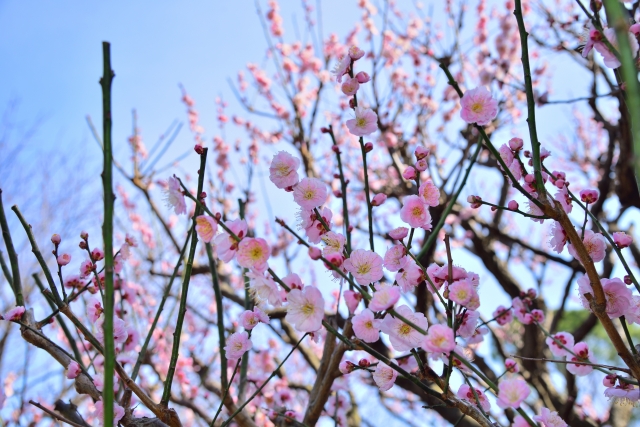
見た目もよく、香りもよく、梅の実もなるので、自分で育てる人もいますし、公園などの梅を見に行く人もいます。
梅は、日本へは約1500年前に、薬の「烏梅」として中国から伝来したといわれています。烏梅は、青梅を燻製し、乾燥したもので、今でも漢方薬として用いられています。
烏梅は、せき止めや胃腸の薬として使われています。
梅の木は高いものでは10メートルになるものもありますが、梅の実を取りやすくするために、3メートル程度にされているものも多いです。
多くの梅の花は、5弁の花びらがある一重咲きのものが一般的ですが、もっとたくさんの花びらのある八重咲きのものもあります。
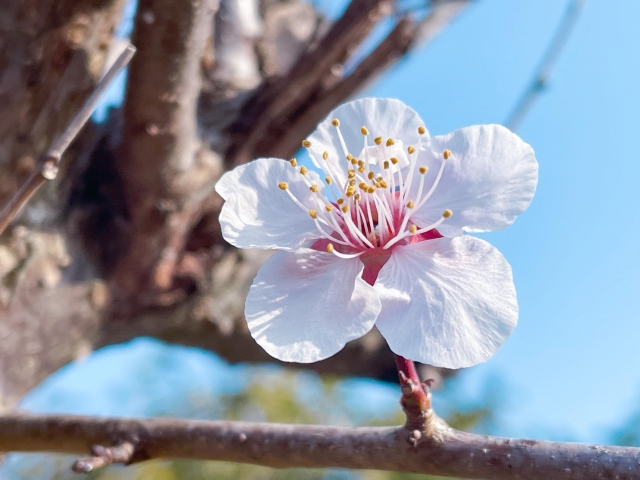
花の色は、赤色と白色のものが多いですが、その間のピンク色のものもあります。
日本の各地には、梅の木を集めた梅林があり、たくさんの観光客や地域の人が集まり、様々な梅の花を鑑賞します。
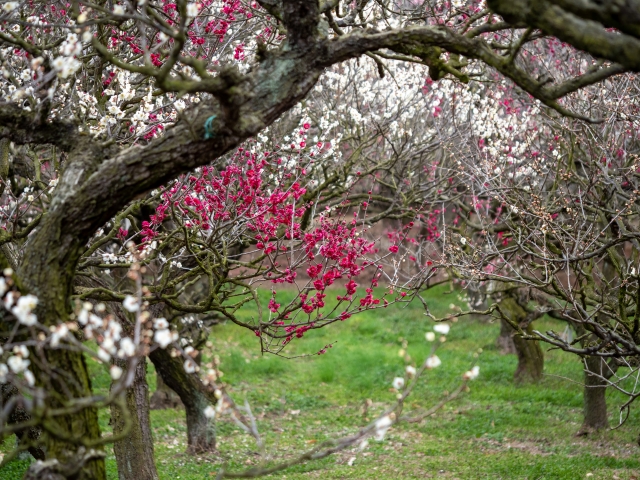
梅の実は、梅干しや梅酒などに加工されることもあります。梅の実の産地としては、和歌山県が有名で、半分以上が和歌山県で作られています。
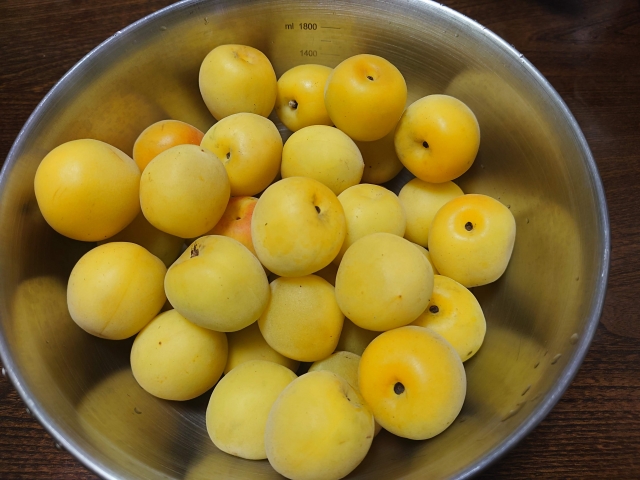
桃 peachにすすむ(このブログにあるページ)
桜 cherryにすすむ(このブログにあるページ)
木にすすむ(このブログにあるページ)
実のなる木にすすむ(このブログにあるページ)
plum
Plum trees are popular because of their beautiful flowers in early spring.
They look good, smell good, and produce ume fruit, so some people grow ume trees themselves, while others go to parks to see ume trees.
It is said that ume was introduced to Japan from China about 1,500 years ago as a medicine called ubai. Ubai is made from smoked and dried green plums, and is still used in Chinese medicine today.
Ubai is used as a cough suppressant and stomachic.
Some ume trees can grow up to 10 meters high, but many are kept at about 3 meters to make it easier to pick ume fruit.
Most plum blossoms are single-petaled with five petals, but some are double-petaled with more petals.
Most flowers are red and white in color, but some are pink in between.
In many parts of Japan, there are plum groves with a collection of plum trees, where many tourists and local people gather to admire the various plum blossoms.
Ume fruit is sometimes processed into umeboshi (pickled plums) or umeshu (plum wine). Wakayama Prefecture is the most famous production center for ume fruit, with more than half of the ume produced in Wakayama Prefecture.
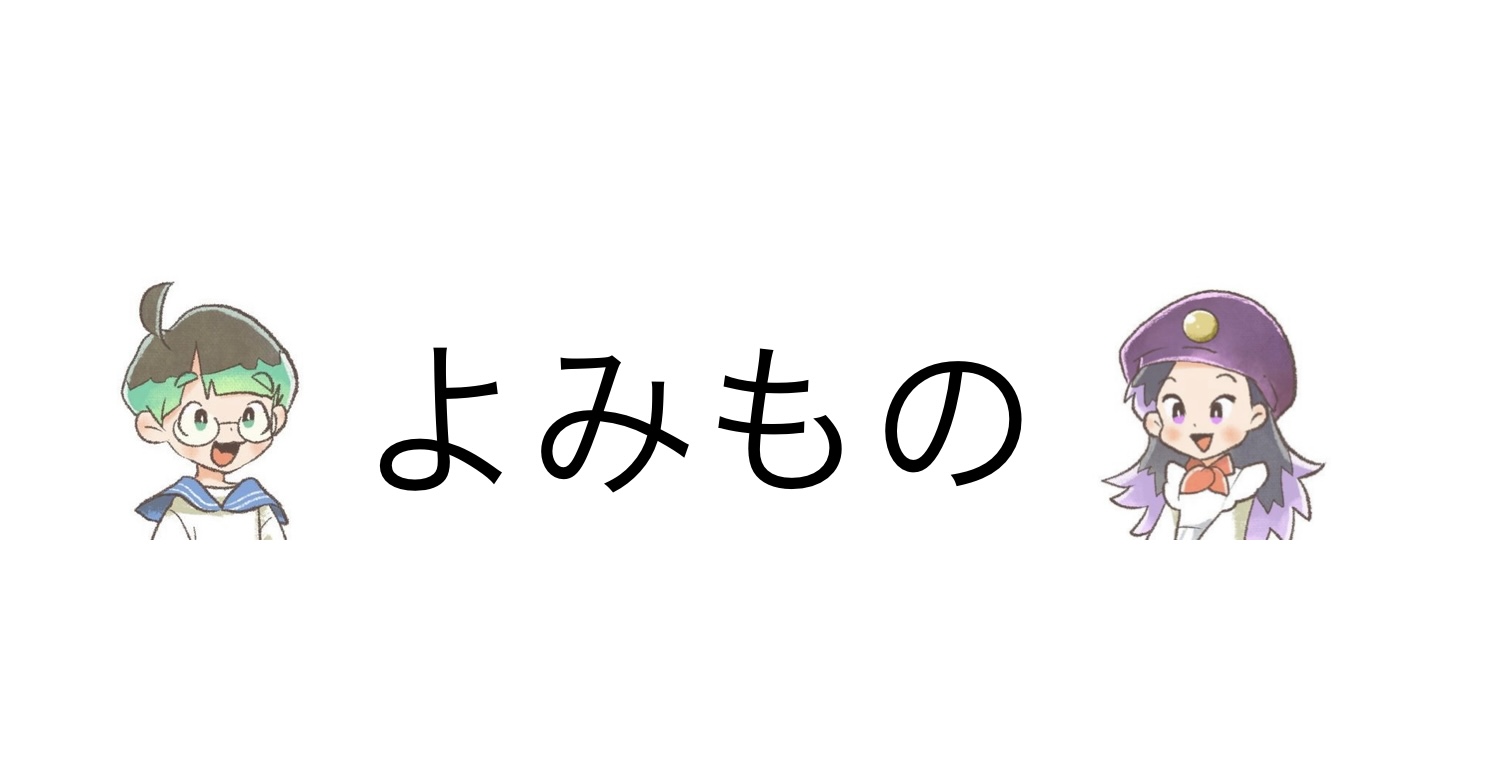
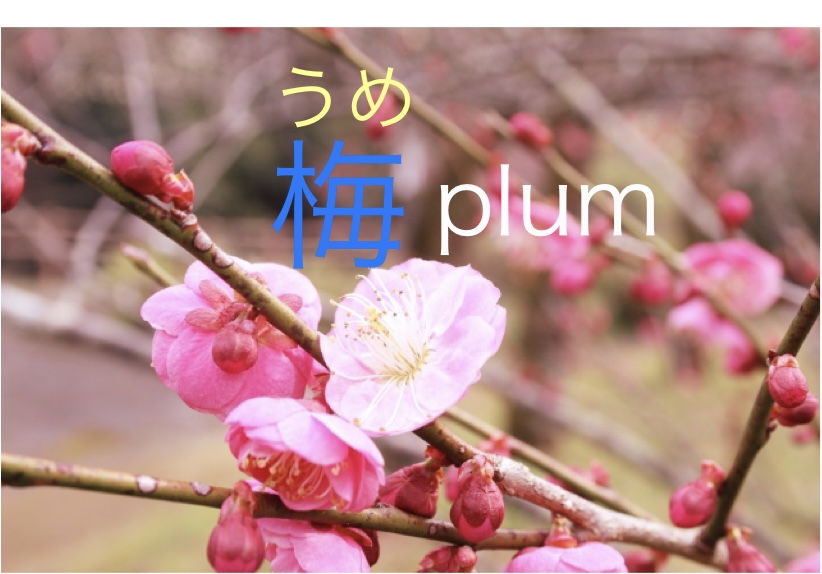


コメント